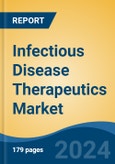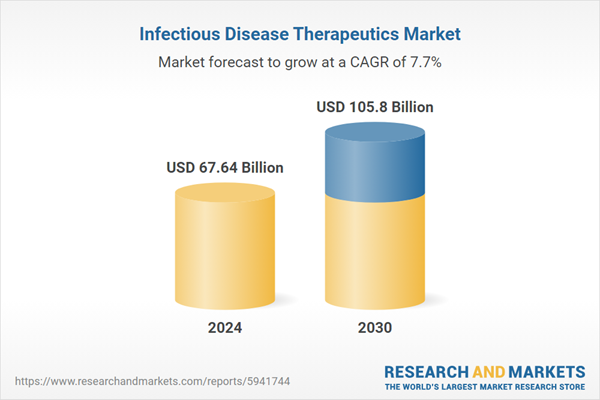Hospitals is the fastest growing segment, North America is the largest regional market
Speak directly to the analyst to clarify any post sales queries you may have.
10% Free customizationThis report comes with 10% free customization, enabling you to add data that meets your specific business needs.
Key Market Drivers
The increasing global burden of infectious diseases fundamentally drives market expansion, creating persistent and widespread demand for effective treatments and preventative measures. Diseases like tuberculosis and malaria continue to exact a significant toll on global health, necessitating ongoing research and development into novel pharmacological agents and improved therapeutic strategies.The sheer scale of these challenges ensures a consistent market for diagnostics, drugs, and vaccines, as healthcare systems grapple with endemic infections and outbreaks. According to the World Health Organization, in its Global Tuberculosis Report 2023, an estimated 10.6 million people fell ill with tuberculosis worldwide in 2022, underscoring the critical need for continued therapeutic interventions. This sustained disease pressure compels pharmaceutical companies to invest in developing new therapies to address unmet medical needs.
Key Market Challenges
A significant challenge impeding the growth of the Global Infectious Disease Therapeutics Market is the substantial costs associated with drug discovery and development. Bringing new pharmaceutical agents from initial research to market approval demands extensive financial outlays for preclinical studies, multiple phases of clinical trials, and manufacturing infrastructure. This immense capital requirement significantly raises the barrier to entry for innovators and imposes considerable financial risk on companies, influencing strategic decisions about which therapeutic areas to prioritize.Key Market Trends
The application of Artificial Intelligence (AI) in drug discovery is significantly reshaping the development landscape for infectious disease therapeutics. AI algorithms are increasingly employed to accelerate the identification of novel drug targets, optimize compound synthesis, and predict drug efficacy and toxicity with greater precision and speed, thereby reducing the time and cost associated with traditional drug development.This technological integration is poised to streamline the discovery of urgently needed treatments for evolving pathogens. According to a survey from Rackspace Technology and Dell/VMware, conducted in October 2023, two out of three pharmaceutical companies (67%) planned to increase their investment in information technology, including artificial intelligence, over the subsequent 12 months. This substantial industry-wide commitment to AI is expected to catalyze innovation across all therapeutic areas, including infectious diseases, by enhancing the efficiency of research and development pipelines.
Key Market Players Profiled:
- Novartis AG
- Gilead Sciences Inc
- GSK PLC
- Johnson & Johnson Innovative Medicine
- F Hoffmann-La Roche AG
- BioCryst Pharmaceuticals Inc
- Merck & Co Inc
- Boehringer Ingelheim International GmbH
Report Scope:
In this report, the Global Infectious Disease Therapeutics Market has been segmented into the following categories:By Disease Type:
- HIV
- Hepatitis
- Influenza
- TB
- Malaria
- HPV
- Others
By End Use:
- Hospitals
- Clinics
- Others
By Region:
- North America
- Europe
- Asia-Pacific
- South America
- Middle East & Africa
Competitive Landscape
Company Profiles: Detailed analysis of the major companies present in the Global Infectious Disease Therapeutics Market.Available Customizations:
With the given market data, the publisher offers customizations according to a company's specific needs. The following customization options are available for the report.Company Information
- Detailed analysis and profiling of additional market players (up to five).
This product will be delivered within 1-3 business days.
Table of Contents
Companies Mentioned
The companies profiled in this Infectious Disease Therapeutics market report include:- Novartis AG
- Gilead Sciences Inc
- GSK PLC
- Johnson & Johnson Innovative Medicine
- F Hoffmann-La Roche AG
- BioCryst Pharmaceuticals Inc
- Merck & Co Inc
- Boehringer Ingelheim International GmbH
Table Information
| Report Attribute | Details |
|---|---|
| No. of Pages | 185 |
| Published | November 2025 |
| Forecast Period | 2024 - 2030 |
| Estimated Market Value ( USD | $ 67.64 Billion |
| Forecasted Market Value ( USD | $ 105.8 Billion |
| Compound Annual Growth Rate | 7.7% |
| Regions Covered | Global |
| No. of Companies Mentioned | 9 |









